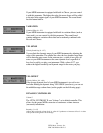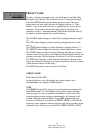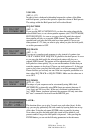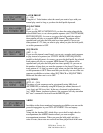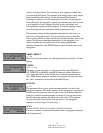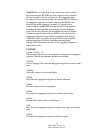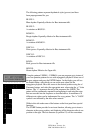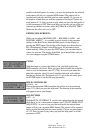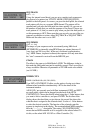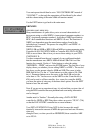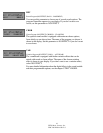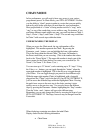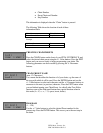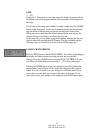
37
ZETA Music Systems, Inc.
ZMC-200 Manual Rev2.0
The EDIT button provides a delete function, deleting the character at the
cursor and moving all characters to its right one position to the left. A “<”
LOOP symbol is then inserted at the end of the string.
The EXIT button allows you to leave the Text Editor.
SYNC
(ON, OFF)
If you enter fewer notes than the value set in LENGTH, the quantize
pattern is continued with the next note value, but using the beginning pitch
in the sequence again.
OCTAVES
(1…4)
Here you determine if the arpeggio should be repeated in another octave
than the one in which it was recorded. If you enter a 2 for this value, for
example, the first playback of the sequence will be in the original octave,
the first repetitions in the octave directly above the original. The maximum
value is 4. The value 1 plays back the arpeggio in the original octave in
which the notes were recorded.
REPEATS
(1…16)
The individual notes in an arpeggio can be repeated up to 16 times. If you
set this value to 1, each note in the sequence is played only once.
VELOCITY
(OFF, 0…127)
If this value is OFF, the velocity (loudness) of the recorded notes are
played back in the velocity at which they were recorded. Otherwise you can
set the loudness of the playback notes to a constant level, 127 being the
loudest.
SEQ PATTERN
(OFF, 1…32)
If you own the ZETA SYNTHONY II, you have the option alongside the
normal Hold Preset, to set a drum pattern sequence )see UTILITY MODE,
EDIT SEQUENCE). As soon as you press the hold pedal, the selected
drum pattern will play on a separate MIDI channel. The pattern will be
repeated until you press the hold pedal two times quickly. Choose one
drum pattern of 1-32, that you want to play when you press the hold pedal,
or set this parameter to OFF.
SEQ TRACK
(OFF, 1…8)
If you own the internal sound board, you can set a complex track sequence
to play instead of a pattern (see UTILITY MODE, EDIT SEQUENCE)



